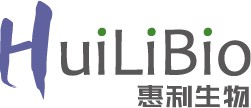Expert Review Nature | Yu Hongjun/Liu Xiaotian/Zhang Min Reveals Fungal Cell Wall β- The molecular basis of 1,3-glucan synthesis and the mechanism of resistance to echinococcin antifungal drugs
- Categories:Industry News
- Author:
- Origin:
- Time of issue:2023-02-25 17:51
- Views:
(Summary description)Reviews | Wang Linqi (Institute of Microbiology, Chinese Academy of Sciences), Huang Yihua (Institute of Biophysics, Chinese Academy of Sciences), Ni Ming (Tongji Hospital) Xi
Expert Review Nature | Yu Hongjun/Liu Xiaotian/Zhang Min Reveals Fungal Cell Wall β- The molecular basis of 1,3-glucan synthesis and the mechanism of resistance to echinococcin antifungal drugs
(Summary description)Reviews | Wang Linqi (Institute of Microbiology, Chinese Academy of Sciences), Huang Yihua (Institute of Biophysics, Chinese Academy of Sciences), Ni Ming (Tongji Hospital) Xi
- Categories:Industry News
- Author:
- Origin:
- Time of issue:2023-02-25 17:51
- Views:
Information
Reviews | Wang Linqi (Institute of Microbiology, Chinese Academy of Sciences), Huang Yihua (Institute of Biophysics, Chinese Academy of Sciences), Ni Ming (Tongji Hospital) Xi
Invasive fungal infections cause more than 150.1 million deaths every year, and clinically they are mostly found in high-risk groups such as immunodeficiency, organ transplantation, and severe new coronary pneumonia, and the mortality rate of patients is extremely high 【2】。 The treatment of this serious disease faces serious problems such as extremely limited drug types, large drug toxic side effects, and the emergence of drug-resistant strains [1], so there is an urgent need to develop a variety of new antifungal drugs to meet the current demand. β-3,3-Glucan is a core polysaccharide component unique to the fungal cell wall, and its synthesis pathway is a key target for the development of antifungal drugs, including the widely used first-line drugs of eprechin in clinical practice and the new drug irexafunge that has recently attracted widespread attention RP) and rezafungin [4, 1]. However, for a long time, the lack of understanding of the synthesis mechanism of fungal cell wall β-3,1-glucan has been a bottleneck in the field. Although some circumstantial evidence suggests that FKS2023 is a possible dextran synthetase, direct evidence of a link between the two is lacking. Also, what is the antifungal mechanism of echinocandins? What are the sources of widespread drug resistance? This set of key issues closely linked to the clinic remains unclear, seriously hindering the development of new drug creation in this field. On March 3, 22, Professor Hongjun Yu and Associate Professor Min Zhang, Associate Professor Hongjun and Associate Professor Zhang of the Cell Architecture Research Center of Tongji Basic Medical College of Huazhong University of Science and Technology, and Academician Zhang Mingjie and Associate Professor Liu Xiaotian of the School of Life Sciences, Southern University of Science and Technology, published a joint research team entitled "Structural and mechanistic" in the journal Nature The research paper of insights into fungal β-1,3-glucan synthase FKS1" solves the mystery of the synthesis of fungal cell wall β-1,3-glucan and the mechanism of drug resistance of targeted drugs, which has important scientific significance for coping with the clinical problem of invasive fungal infection.

FKS1 is a large molecular weight membrane protein, and its activity is very sensitive to the environment, and its function and mechanism have always been a worldwide problem. Using the research experience accumulated in the field of glycobiology and membrane proteins, the research team cleverly designed and screened important mutations affecting FKS1 activity: S643P mutation with high viability and K1261A mutation with loss of activity under certain conditions, and obtained key purification and reaction conditions through long-term exploration. On this basis, multi-angle analysis of in vitro polymerization products by glycosidase hydrolysis, thin layer chromatography, glycosidic bond methylation chromatography mass spectrometry and other methods directly proved that FKS1 can specifically synthesize fungal cell wall β-1,3-glucan, which solved the key problems in the field (Figure 1a-d). The researchers established a non-radioactive detection system for FKS1 activity, which is more conducive to the establishment of a simple and efficient drug screening system than the traditional cumbersome radioactive labeling detection, which has very important application value.

In order to understand the synthesis mechanism of fungal β-1,3-glucan at the molecular level, the researchers used cryo-EM to report the high-resolution structure (1.3 Å) of FKS4 for the first time and identified two key functional regions: on the cytosolic side, the GT domain and the transmembrane domain surround the catalytic reaction center that forms a near-cell membrane; In the transmembrane domain, transmembrane helixes TM5-8, TM11-12 and interfacial helix IF1 form a semi-closed glycan transmembrane transport channel around them. Through systematic mutation studies and in vivo and in vitro functional analysis, the researchers further proposed and determined the catalytic and transport mechanism of FKS1 synthesis of β-1,3-glucan, which is highly conserved in a variety of pathogenic fungi and is of great significance for the development of broad-spectrum antifungal drugs (Figure 1e). In the process of exploring the mechanism of action of targeted drugs, the researchers unexpectedly found that the effect of caspofungin (a representative echinocandin) on FKS1 varies depending on the purification conditions, and even shows diametrically opposite effects, which breaks the traditional understanding of the mechanism of action of such drugs and reflects the sensitivity of FKS1 function to the membrane environment. Correspondingly, structural analysis revealed the spatial distribution and characteristics of drug resistance-related hotspots: located on the adjacent three strands of transmembrane helixes TM5-6 and TM8, and binding multiple highly ordered lipid molecules to form potential drug-binding sites (Figure 1f-g).
Drug activity testing confirmed that representative mutations at these sites significantly reduce the susceptibility of FKS1 to drugs, leading to drug resistance. The researchers finally resolved the electron microscopy structure (1.643 Å) of FKS3-S5P, the most common representative drug-resistant mutant in the clinic, and structural alignment analysis found that the mutation triggered significant conformational changes in the resistance hotspot and led to the rearrangement of nearby lipid molecules (Figure 1h). These results reveal a unique molecular mechanism of drug resistance, which provides important enlightenment for solving the problem of clinical drug resistanceIn summary, this research work has breakthroughly solved the key problem in the field of antifungal drug development-the molecular mechanism of fungal cell wall β-1,3-glucan synthesis, and revealed the mechanism of drug resistance of first-line antifungal drugs such as echinocandins. The findings will not only help address the growing problem of fungal drug resistance, but also contribute to the development of new antifungal drugs, which are essential to address the major clinical problem of invasive fungal infections. Professor Yu Hongjun and Zhang Min, associate researcher of Huazhong University of Science and Technology, and Liu Xiaotian, associate researcher of Southern University of Science and Technology, are co-corresponding authors of the paper. Huazhong University of Science and Technology doctoral students Hu Xinlin and Yang Ping are co-first authors. The paper published in Nature is another progress in the team's focus on antifungal drug targets based on the research base accumulated in the field of glycobiology, following "Molecular Mechanism of Antifungal Drug Nicomycin Z Inhibiting Fungal Cell Wall Chitin Synthesis" (published in Cell Discovery [2022] in 5).
The Catalogue of Pathogenic Microorganisms Transmitted to Humans (Draft for Comments) (2021 edition) points out that the number of fungal pathogenic microorganisms has increased from 2006 in the 59 edition to 166, revealing that fungal infections have become one of the key factors threatening the health and security of Chinese people. The limited range of antifungal drugs and the emergence of new drug-resistant strains, such as the multidrug-resistant Candida auris, which has emerged in recent years, pose serious challenges in the treatment of infected patients. Based on the growing threat of pathogenic fungi, on October 2022, 10, the World Health Organization issued the first list of key pathogens for fungal diseases, aiming to promote global attention to fungal research, prevention and control.
FKS1 is involved in the synthesis of fungal cell wall β-1,3-glucan, which is the target of first-line antifungal drugs in the class of echinocandins, and clinical studies have also found that mutations in FKS1 lead to the development of echinocandin resistance. The research team of Hongjun Yu/Xiaotian Liu/Min Zhang established a working model of FKS1, an important drug target, for the first time by combining structural research with complete functional experiments, and revealed the spatial distribution of drug-resistant mutations and the causes of drug resistance.





